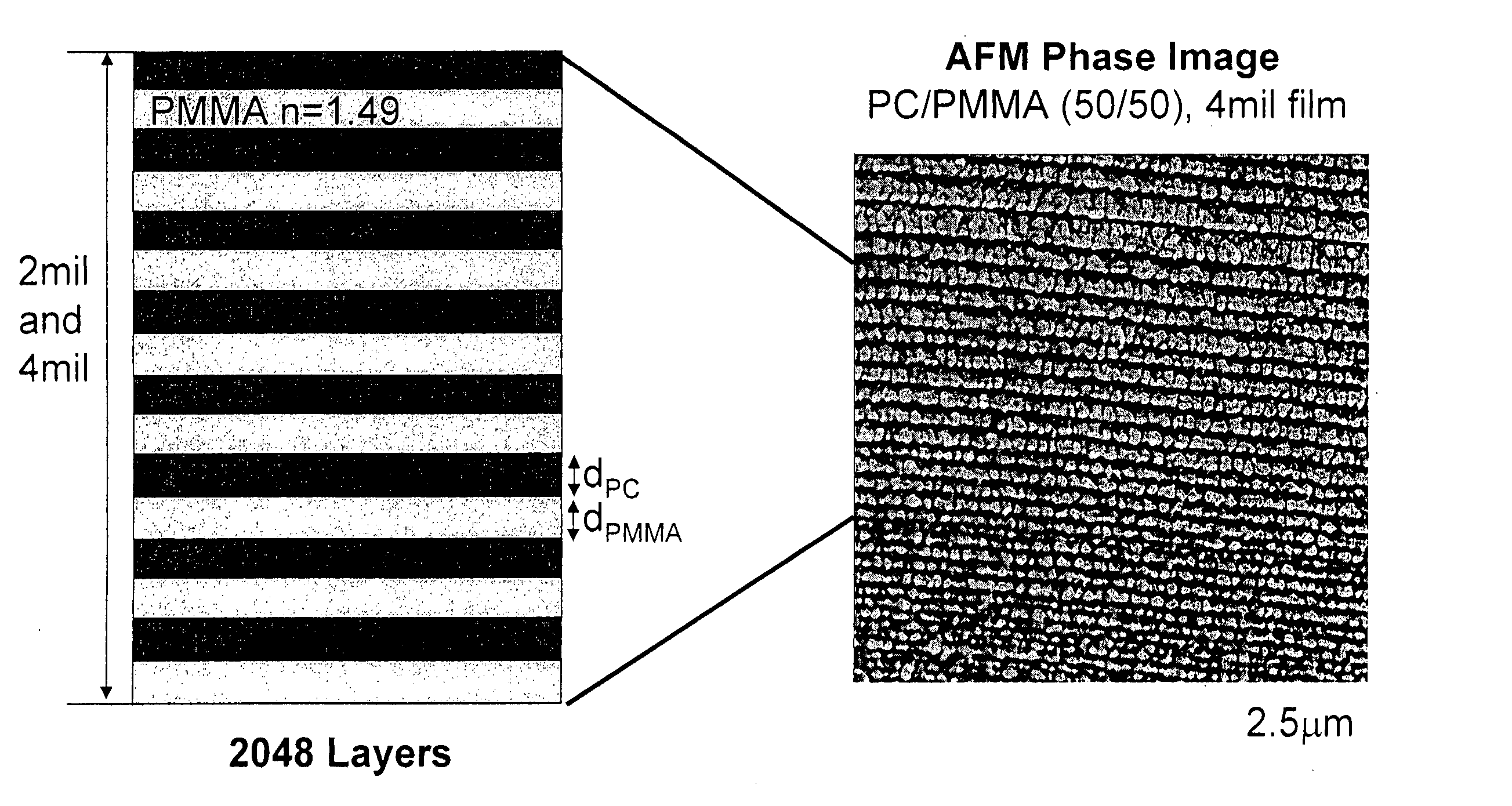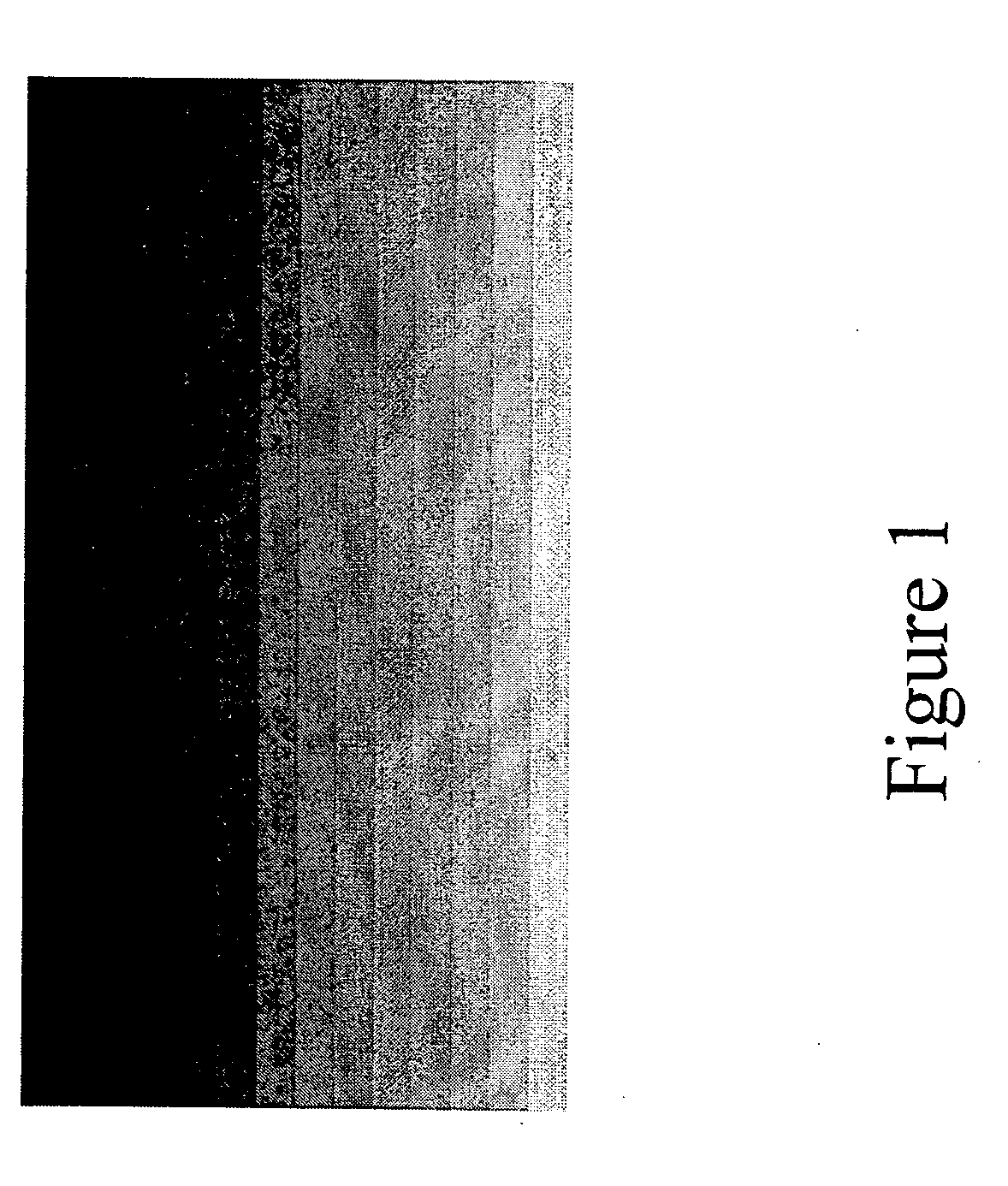Multilayer polymer gradient index (GRIN) lenses
- Summary
- Abstract
- Description
- Claims
- Application Information
AI Technical Summary
Benefits of technology
Problems solved by technology
Method used
Image
Examples
examples
[0080] A set of GRIN hierarchical multilayered composite polymer lenses was fabricated, according to staged processes discussed above, using a composite of polycarbonate (PC) and poly(methyl methacrylate) (PMMA).
[0081] The initial multilayer polymer composite films are illustrated in FIG. 5. They are comprised of 2,048 alternating nanolayers of the component polymers, PC and PMMA with a total thickness of 50 μm (2 mils) and 100 μm (4 mils). An Atomic Force Microscope (AFM) picture of the material with equal thickness layers, labeled the 50 / 50 PC / PMMA sample, is also shown. The individual layer thickness for 50 / 50 PC / PMMA film is 25 nm in the 50 μm film and 50 nm in the 100 μm film.
[0082] A set of 19 different films was fabricated with different relative layer thickness, but the same overall thickness. The ratio of the polycarbonate to the PMMA layer thickness varied from 95 / 5 to 5 / 95 to yield a set of multilayered polymer composite films with different refractive indexes. These mu...
PUM
 Login to View More
Login to View More Abstract
Description
Claims
Application Information
 Login to View More
Login to View More - R&D
- Intellectual Property
- Life Sciences
- Materials
- Tech Scout
- Unparalleled Data Quality
- Higher Quality Content
- 60% Fewer Hallucinations
Browse by: Latest US Patents, China's latest patents, Technical Efficacy Thesaurus, Application Domain, Technology Topic, Popular Technical Reports.
© 2025 PatSnap. All rights reserved.Legal|Privacy policy|Modern Slavery Act Transparency Statement|Sitemap|About US| Contact US: help@patsnap.com



